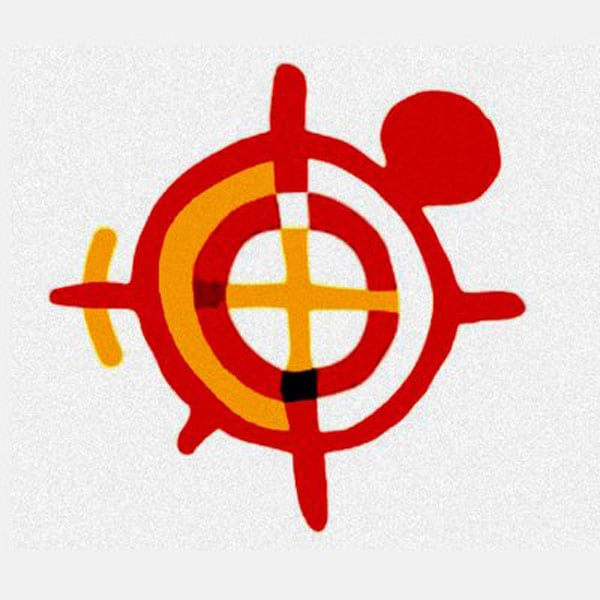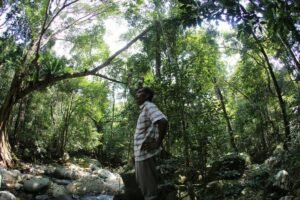
May 23, 2018; Columbia Journalism Review
A few weeks ago, NPQ reported with some relief that the online news site Indian Country Today (ICT) had reopened after a half-year hiatus. Last year, the site, which had been owned by the Oneida Nation, was shut down for financial reasons. As reported by NPQ, the site is now working on a nonprofit journalism model. NPQ has reported on the trend of nonprofit journalism quite often in recent months. It appears one of the main ways that online journalism can thrive and be sustainable.
However, as Mary Annette Pember, an award-winning American Indian journalist and frequent writer for Indian Country Today, points out in the Columbia Journalism Review, financial issues are not the only struggles online journalism faces, nonprofit or not. Maintaining editorial independence is also a challenge, particularly since that new nonprofit owner, the National Congress of American Indians (NCAI), is funded in large measure by tribal governments.
Indian Country Today’s new executive editor, Mark Trahant, a member of the Shoshone-Bannock tribe, has been widely lauded as a top-notch American Indian journalist and editor. Tim Giago, who founded Indian Country Today in 1981 but was often critical of its operations after he sold it to the Oneida Nation in 1998, is among those singing Trahant’s praises. In short, it is not the media team that is in question.
Rather, Giago asks, “How will NCAI handle it when Indian Country Today encroaches on the interests of its tribal membership? Will they have to courage to support the publication?”
As Pember notes, such challenges are not unprecedented. For example, she references the case of Lori Edmo-Suppah, who was fired as editor of the Sho-Ban News for what Fred Auck, the chairman of the council governing the Shoshone-Bannock tribes, described as “gross insubordination.” Edmo-Suppah said she believed this was due to her running a story that tried to cover both sides of a move to oust Auck and others on the council. Some of the stories are quite amazing and scary. Giago cites one case when a newspaper had its windows smashed and later was firebombed for writing editorials critical of some of the American Indian Movement’s tactics.
Although freedom of the press is guaranteed in the Indian Civil Rights Act, it doesn’t always play out that way. In 2003, the time of Edmo-Suppah’s firing, Paul DeMain, editor of a native newspaper not located on a reservation, was quoted as saying, “I can guarantee that just about every year some editor gets fired because what they print is unpopular with the tribal council.”
Sign up for our free newsletters
Subscribe to NPQ's newsletters to have our top stories delivered directly to your inbox.
By signing up, you agree to our privacy policy and terms of use, and to receive messages from NPQ and our partners.
The National Congress of American Indians (NCAI), which now owns Indian Country Today, is a membership association for tribal and individual members with a mission to:
- Protect and enhance treaty and sovereign rights.
- Secure our traditional laws, cultures, and ways of life for our descendants.
- Promote a common understanding of the rightful place of tribes in the family of American governments.
- Improve the quality of life for Native communities and peoples.
Bryan Pollard, president of the Native American Journalists Association, describes NCAI as being very political, “just like tribal governments.” And since NCAI depends on tribal government dues, with the wealthiest tribes paying annual dues of $30,000 a year, the challenge of providing fair and critical coverage of controversies that may arise at the tribal level is a significant concern.
Pollard notes that conflicts between governments and a free press are hardly unique to Indian Country. Outside of Indian Country, we can see that conflict playing out in the very tense relationship between President Trump and the media, particularly the Washington Post, which had its credentials revoked by then-candidate Trump in 2016. In fact, as Sen. John McCain pointed out when talking about President Trump, shutting down the free press is one of the first acts a dictator will take.
NCAI is aware of these concerns and seems to share them. Indeed, NCAI executive director Jacqueline Pata says they have been working for a while to establish firewalls that would preserve and guarantee Indian Country Today’s independence, although the details of what those firewalls will be are not specified in Pember’s article. In 2003, a similar attempt was made by the Navajo, when the Navajo Tribal Council in Arizona approved setting the tribal paper up as an independent corporation.
The challenge facing American Indian journalism is twofold: it is not just about editorial independence, but also making sure American Indian stories appear in the press at all. Recognizing the shortfall, after Indian Country Today was put on hiatus, a number of American Indian journalists left their posts in the mainstream media and established sites focusing on American Indian stories. The impetus for that movement is that the American Indian narrative is vastly underreported in the United States and the rest of the world. If American Indians do not tell their story, the argument goes, no one will.
Indeed, the importance of Indian Country Today is hard to overstate. Its website continued to have over 500,000 unique hits a month, even when it was not publishing. And its revival, Pember notes, comes at a time that “tribes face federal threats to their sovereignty and to historic US treaty agreements, as well as policies concerning land use and resource extraction, the intersection of Medicaid and treaty rights, and more.”
As Indian Country ramps up—two new journalists are slated to be hired in coming weeks—getting the editorial balance right will be critical. For his part, Trahant has said, “The best way I know how to demonstrate our independence is to produce solid, thoughtful journalism.”—Rob Meiksins











